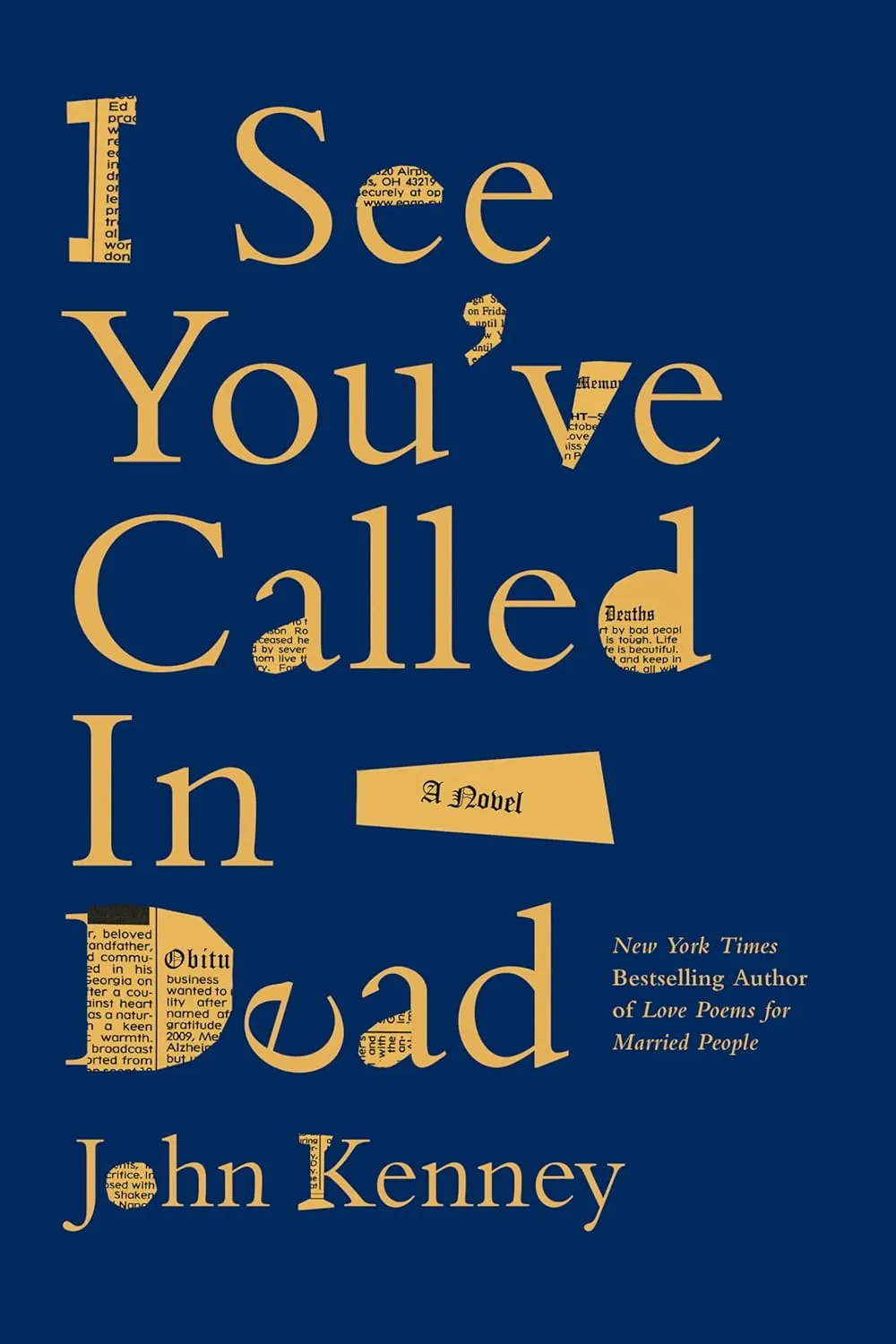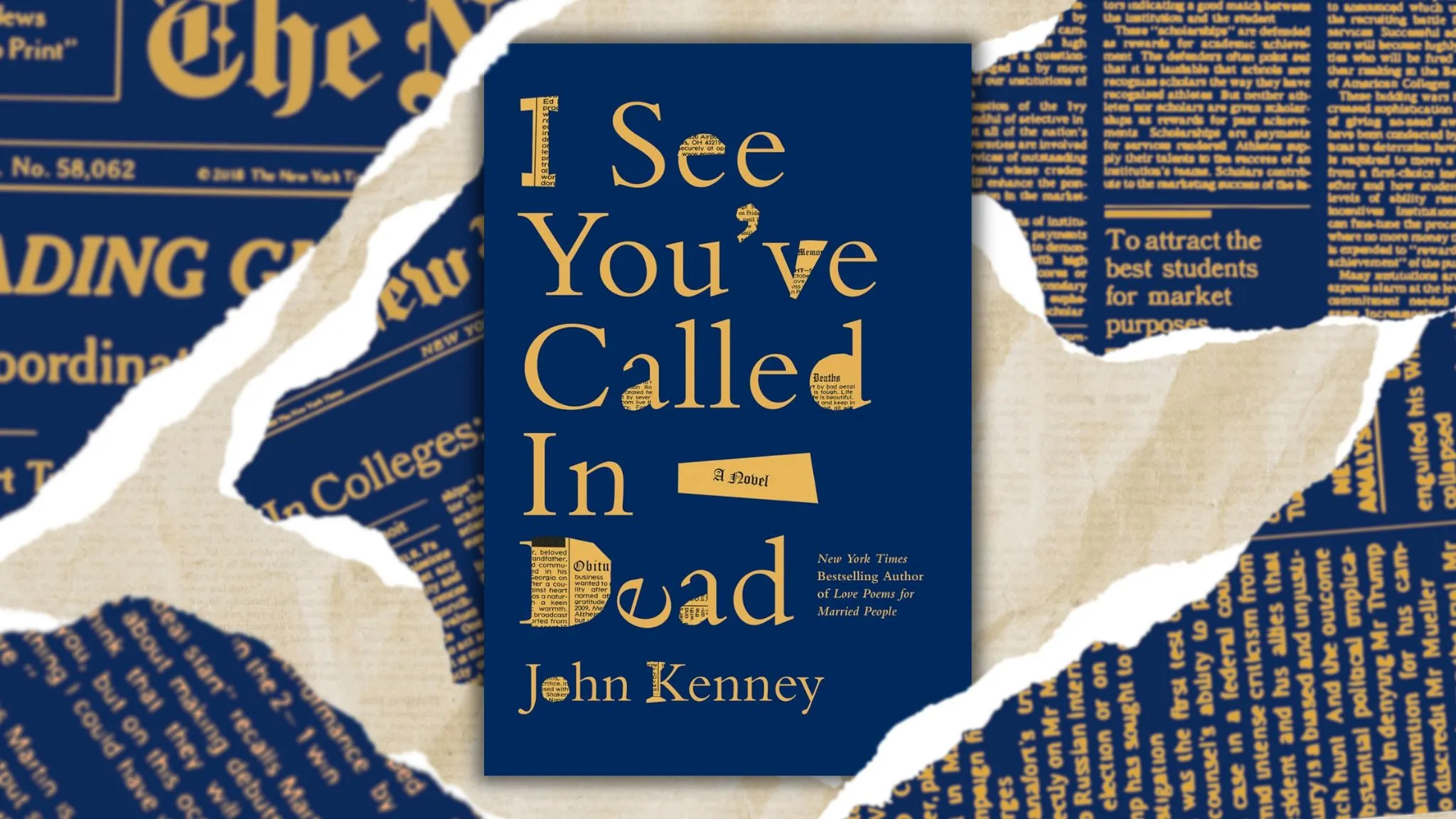I See You’ve Called in Dead by John Kenney
A wake-up call to embrace and celebrate life.
Author John Kenney has gifted readers an uplifting novel for the ages that immediately shot to the top of my five favorite books read so far in 2025. I See You’ve Called in Dead is replete with essential elements that make a work of fiction great: heart, humor, intelligence and emotional depth.
Ultimately, it celebrates the magic and wonder of life and the grace bestowed from true friendships. Embracing disappointments, facing challenges head-on and being able to recognize and seize second chances may not be easy, but the results are undeniably rewarding.
Bud Stanley is depressed. He has numerous valid reasons, not the least of which is that his place of employment for the past 9 years, United World Press, is about to fire him. But they are temporarily hindered because of a technicality in their human resources computer system that won’t permit the firing of a dead employee.
Writing His Own Obituary
Bud has been one of two staff obituary writers and a card-carrying member of the Society of Professional Obituary Writers (their motto is: “We write about the dead for a living.”) until “the incident.” A particularly bad blind date engineered by his co-worker and friend Tuan triggered an emotional meltdown and drunken spree when she showed up late with her ex in tow, announcing their reconciliation had occurred on her way to meet Bud at the bar.
He was already bereft because his wife of several years had felt the urgent need for a husband upgrade. Thus, she suddenly announced she was leaving him for a tall, gangly Englishman who, not inconveniently, was wealthy. Their divorce was uncontested and her remarriage swift. Bud was left with his heart shattered and an apartment suddenly devoid of the better part of their furnishings, leaving it resembling a shabby dorm room. The prospect of starting over in middle age was excruciatingly demoralizing.
The combination of fresh rejection and painfully raw memories served to temporarily relieve Bud of his senses. To distract and entertain himself, he began to play with words and phrases on his computer, composing a wildly outlandish obituary for himself. Instead of sensibly deleting it or saving it to a file, he logged into the newspaper’s computer system, overrode protected passwords and posted this sardonic fantasy in a live feed.
As Tuan would remind him the following morning, the headline blared, “Bud Stanley, 44, former Mr. Universe, failed porn star, and mediocre obituary writer is dead.” Tuan agreed with the latter observation with alacrity. Human Resources might have forgiven the fake obituary, but overriding the computer safeguards was grounds for immediate termination.
Death of the Newsroom
Bud is the narrator in I See You’ve Called in Dead, brimming with wry humor that will have tears of laughter streaming down the reader’s cheeks. He is painfully aware of a lifetime of questionable decisions, beginning with college, where he frequently changed majors before settling on journalism, an already declining field.
After graduation, he traveled the world for a few months before running out of money, and then assumed he would be swiftly snapped up by one of the great newspapers. Eventually, he settled for writing obituaries and moved a few times until getting his break with New York’s United World Press.
In a world of ever-shrinking newsrooms, Bud knew his career was dead. In less than two decades, beginning about 2004, 3200 weekly publications closed along with innumerable local papers, leaving many communities news deserts with the golden age of print journalism fossilized. Call it midlife or existential as you will, this created a monumental crisis for Bud.
A Landlord Turned Friend
Two years ago, Bud moved from the apartment he had shared with his wife on Manhattan’s Upper West Side to a 150-year-old three-story brick townhouse in a quiet neighborhood on a tree-lined street in Brooklyn. It was a well-tended street populated by families sprinkled with a generous mix of children and geriatrics who sat outside on pleasant days, visiting with friends and passersby.
Gentrification had taken place, with many bodegas supplanted by shops providing overpriced, trendy fare. Blue collar workers, teachers, starving artists and store clerks were displaced by lawyers and financial wizards, but remnants of the past remained. Rents had skyrocketed almost without exception.
Tim, his owner-occupied landlord, bought the building 20 years earlier and occupied the first two floors, charging Bud a below-market rate for the third floor. Tim was paralyzed from the waist down after his motorcycle was mowed down by a speeding vehicle. His housekeeper/shopper/cook and fierce advocate, Esther, came in daily.
Bud, perhaps sensing the frustration and loneliness of his landlord, who had been a vibrant, athletic man with a financially successful career, became his friend. Using a well-built ramp, he got wheelchair bound Tim back out in the community, whether stopping for pizza and beer, taking long walks or on a rare occasion participating in tandem skydiving.
A Wakeup Call to Embrace Life
On suspension while his employer met with their legal advisors to determine how to terminate his contract, Bud began to attend funerals and wakes of strangers, sometimes with Tim accompanying him.
He met a sad young woman named Clara who habitually attended these mournful events, chastened by the fact she had missed being at her father’s deathbed by remaining on a work assignment. There are several other significant characters that make John Kenney’s I See You’ve Called in Dead such a rare, multi-faceted, polished gem. You owe it to yourself to read the full story.
As Bud confronts the reality of his life and what aspects are most important to him, he realizes his talent and skill as an obituary writer is a gift to those left behind. Writing a thoughtful obituary is a way to honor and remember the dead; “writing stories from their life,” as vital and longer-lasting than an ephemeral spoken eulogy. I See You’ve Called in Dead is a wake-up call to embrace and celebrate life.
 John Kenney is the author of two novels and four books of poetry. His first novel, Truth In Advertising, won the Thurber Prize for American humor. He is also the author of Talk to Me, which received a starred Kirkus review, and the New York Times bestseller Love Poems for Married People. He is a long-time contributor to The New Yorker.
John Kenney is the author of two novels and four books of poetry. His first novel, Truth In Advertising, won the Thurber Prize for American humor. He is also the author of Talk to Me, which received a starred Kirkus review, and the New York Times bestseller Love Poems for Married People. He is a long-time contributor to The New Yorker.

Publish Date: 4/1/2025
Genre: Fiction, Humor
Author: John Kenney
Page Count: 304 pages
Publisher: Zibby Publishing
ISBN: 9798989923014

